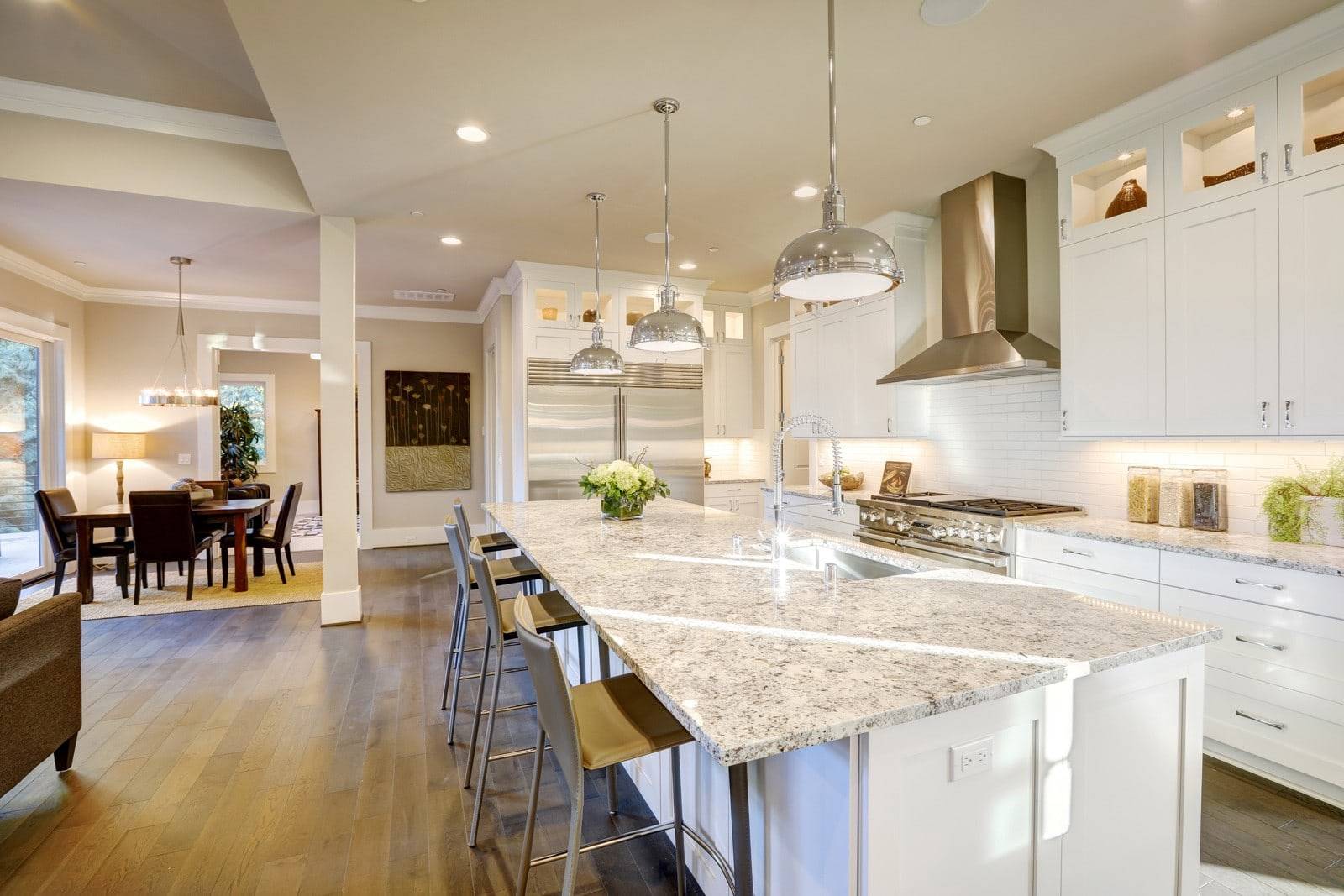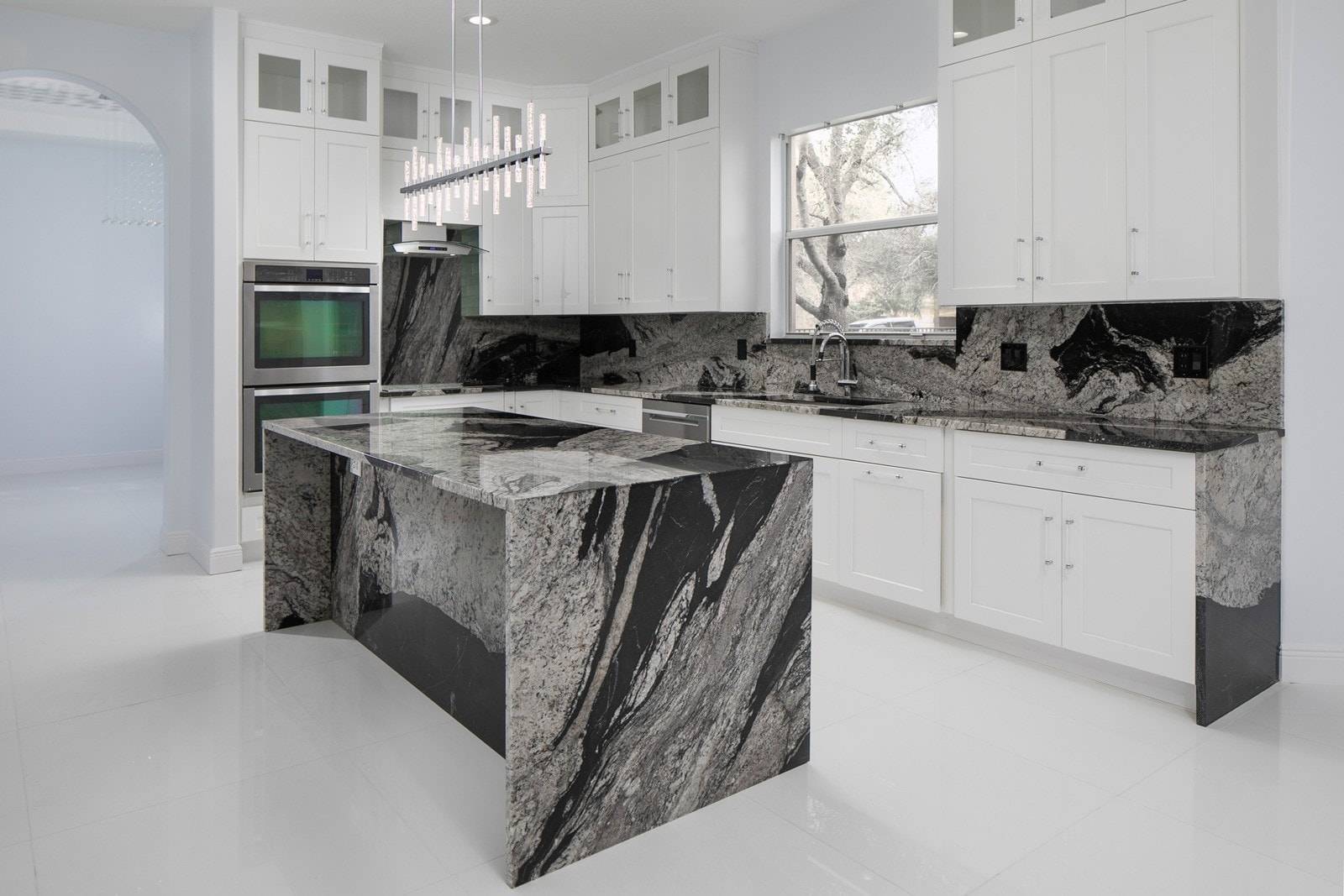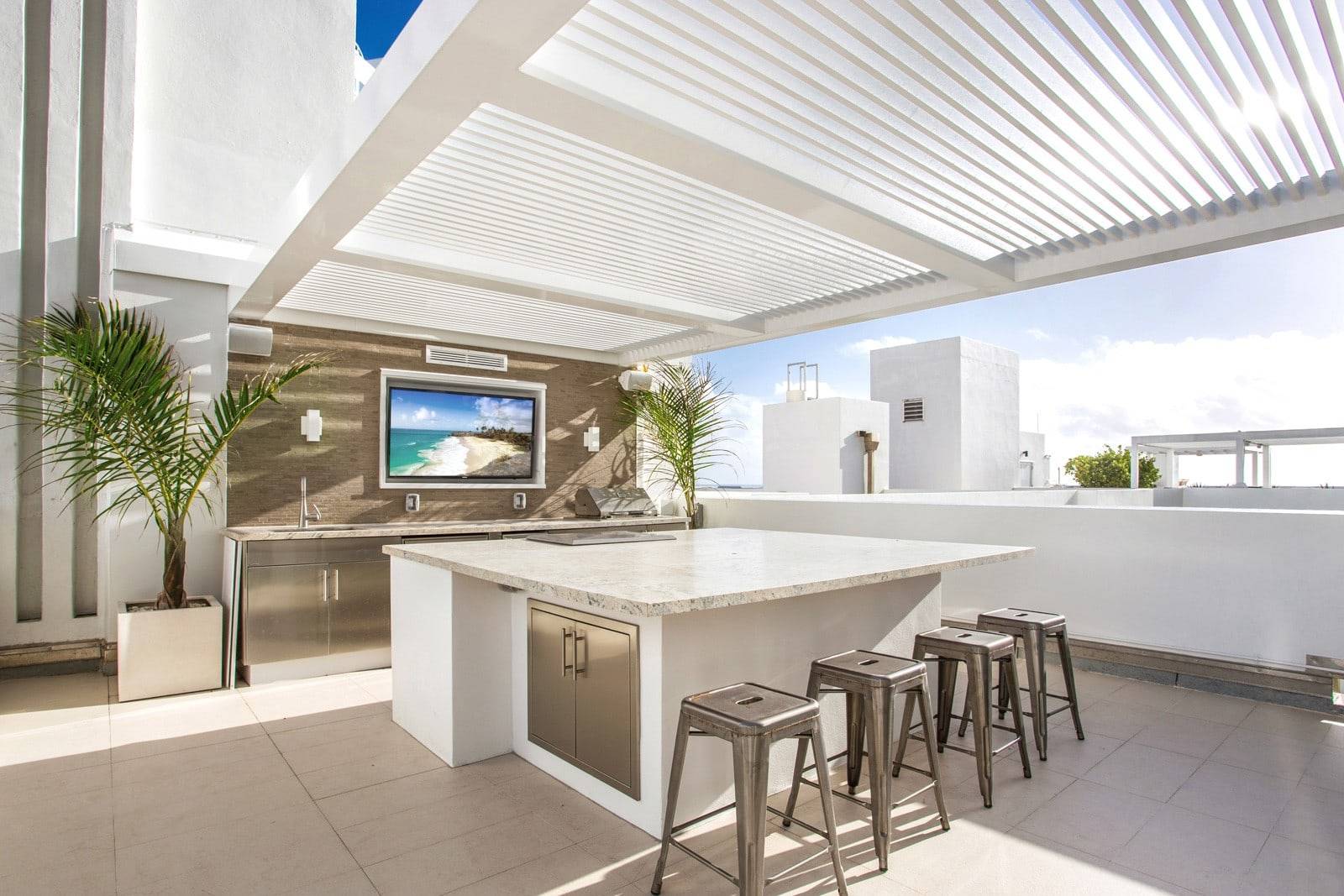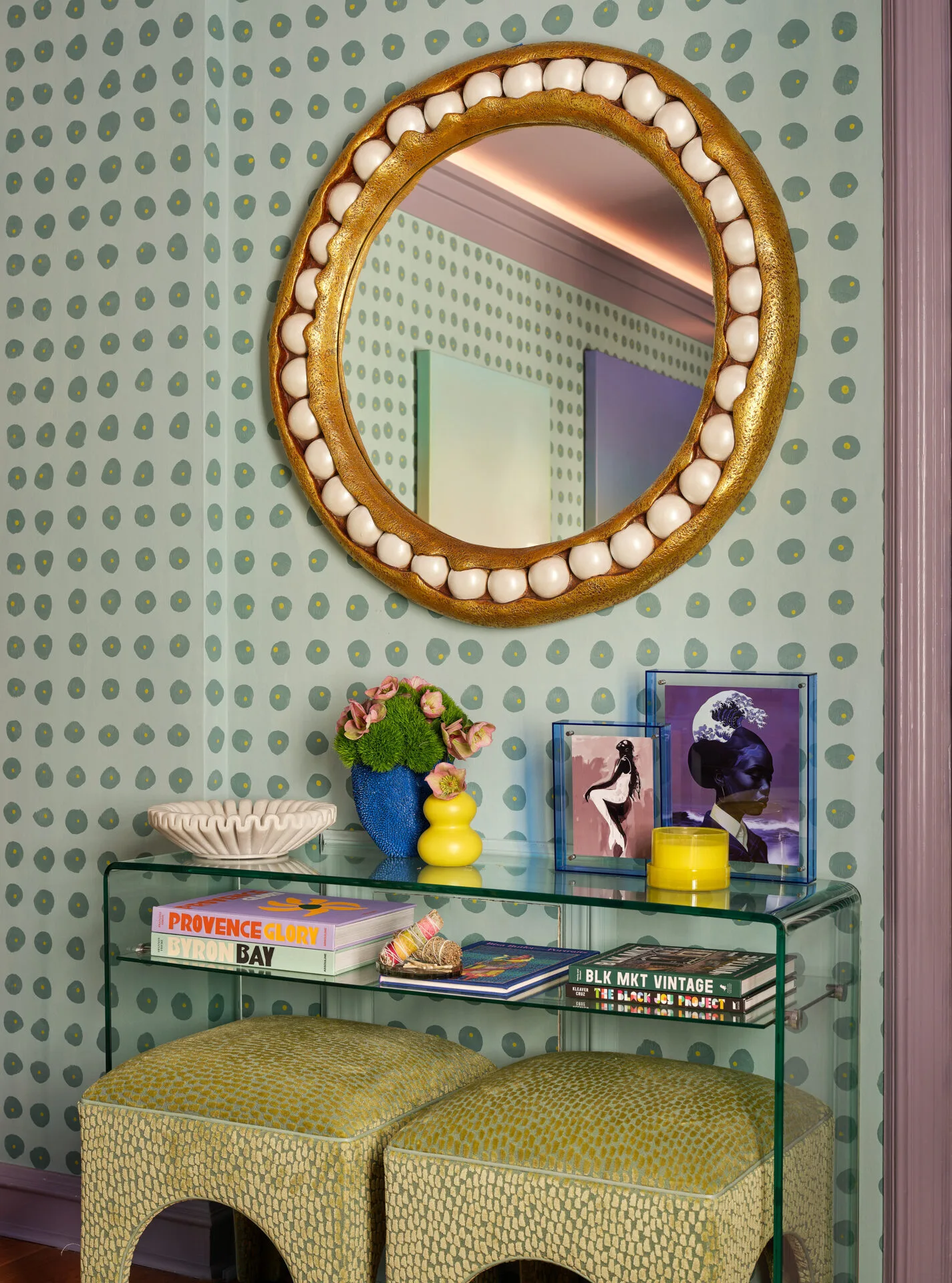
What is Granite?
What is the stone that can look both incredibly sophisticated, super simple, and is one of the most durable stones for home use? If you thought granite, then you win.

History of Granite
Because granite starts as molten rock, we classify it as igneous rock, in comparison to metamorphic quartzite or sedimentary rocks like onyx or dolomite. Igneous means that it is cooled down magma, and depending on the size of the magma chamber, it can take thousands or millions of years for it to form.
The time it took for the magma to cool down defines the size of the crystals – the longer the cooling (usually closer to the center of the earth) the more prominent the crystals. Dallas White is a good example of this. The shorter the cooling period (closer to the surface of the planet) the less visible the grains of the stone. Absolute Black is a great representation of this.
The time it took for the magma to cool down defines the size of the crystals – the longer the cooling (usually closer to the center of the earth) the more prominent the crystals. Dallas White is a good example of this. The shorter the cooling period (closer to the surface of the planet) the less visible the grains of the stone. Absolute Black is a great representation of this.

Properties of Granite
For thousands of years, people have been using granite in interior and exterior design. Thanks to its durability (only quartzite can be harder in some cases) granite is very low maintenance.
This natural stone is hygienic and perfectly suitable for food contact. It is acid resistant, meaning liquids such as lemon juice or vinegar wonʼt etch the surface. Additionally, granite is resistant to high temperatures, so you can place a hot dish right out of the oven on your countertop.
This natural stone is hygienic and perfectly suitable for food contact. It is acid resistant, meaning liquids such as lemon juice or vinegar wonʼt etch the surface. Additionally, granite is resistant to high temperatures, so you can place a hot dish right out of the oven on your countertop.

Granite Care
You may seal your granite countertops periodically, and they are easily cleaned with water and soap. Please avoid using abrasive cleaners containing chlorine bleach or ammonia, and do avoid leaving oil spills on the countertop for prolonged periods of time. Granite is a natural stone that can be enjoyed for many years if taken care of properly.




